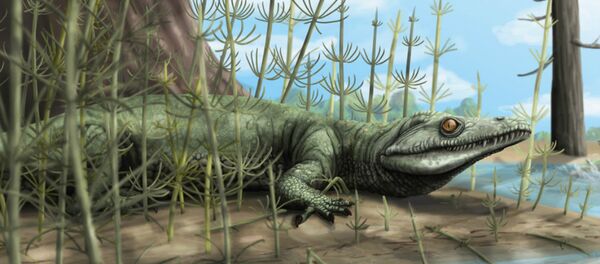The dinosaur was discovered in Sierra Barrosa, which is in Northwest Patagonia. According to researchers, it was around 21 feet long and was an extremely violent predator that loved to kill its pray with sickle-shaped claws.
Meet Murus, the latest megaraptor dug up by paleontologists via @PLOSPaleo @PLOSONE https://t.co/8rf9a0rDHh pic.twitter.com/fjmPZxCEF4
— PLOS Blogs (@PLOSBlogs) July 20, 2016
One of the lead scientists on the project, Dr Rodolfo Anibal Coria, a paleontologist from Universidad Nacional de Río Negro in Argentina, discovered the specimen during one of his expeditions to the area.
"One of our crew members found the first bones sticking out from a lateral wall of cannon. We have known since the beginning that the specimen was undiscovered, because no previous theropods were known from that particular geological stratum. But we had to identify the anatomical characters, which came later, once all the bones were collected and cleaned at the museum lab," Dr Anibal Coria told Sputnik.

Though it was more agile, it had a lighter build than other carnivorous dinosaurs discovered in the past. The dinosaur belonged to a group of meat-eaters known as megaraptors. The species used to roam in Patagonia, but fossils have been discovered in Australia and Japan.
Dr Anibal Coria said that the Murusraptor specimen had the complete posterior half of the skull, many vertebrae and pelvis bones.
"We choose [the] Sierra Barrosa locality because most dinosaurs bearing geological formations are exposed there. We selected the right area and our team spread out to start looking for bones. Once the bones are removed from the ground, they are prepared in the museum lab. Having the bones prepared, we start the anatomical study, comparing the bones with other dinosaurs. If the bones have distinguished anatomical features, we can propose a new dinosaur taxon," Dr Anibal Coria said.
But the question most people are asking is would the Murusraptor Barrosaensis win in a fight against a Tyrannosaurus — or T-Rex?
"Murusraptor belongs to the family of megaraptorids. Large-sized, long-armed kind of raptors, typical of South American dinosaurs at the time. They never had the chance to encounter Tyrannosaurus. But, I believe a gang of Murusraptors could do a lot of damage to a Tyrannosaurus."
The entire process of discovery took eight weeks and it's not over yet- the Murusraptor left a few open questions, such as its evolutionary history and a mystery surrounding its ancestors…
Here's a look at the holotype of Murusraptor pic.twitter.com/4LQJzlQgQ2
— Dino Anims (@animatrocities) July 20, 2016
"The team is now exploring older rocks with the hope of finding that ancient Murusraptor ancestor, in order to know better how and from what they evolved," Dr Anibal Coria added.


